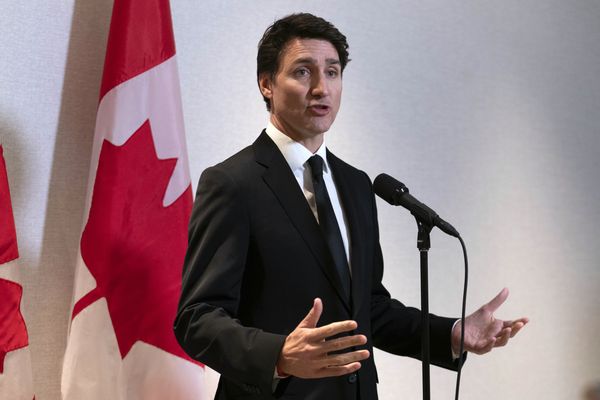
Confrontation with China is reaching fever pitch in many Western countries. Clashes over trade, the South China Sea, COVID-19, and Huawei’s role in 5G development all signify a growing appetite for a new Cold War with Beijing. But while there are many good reasons to criticize China, there is also mounting danger that blanket Sinophobia generates distorted understandings of Chinese behavior, and knee-jerk policy reactions follow.
As Shahar Hameiri and I argue in a new report for British think tank Chatham House, this is certainly true when it comes to China’s Belt and Road Initiative (BRI). President Xi Jinping’s signature foreign policy, the BRI promotes infrastructure connectivity across Eurasia and east Africa. Pundits and policymakers typically view it as a grand strategy designed to challenge U.S. hegemony, requiring a confrontational response.
Narratives of debt-trap diplomacy, originating in a New Delhi think tank, have been especially influential. Beijing is supposedly deliberately luring poor countries into unsustainable debts to finance infrastructure projects, enabling China to seize these assets when recipients experience debt distress, extending China’s strategic reach. As secretary of state, Rex Tillerson lambasted the BRI’s “predatory economics,” while Vice President Pence accuses Beijing of using debt-trap diplomacy in Sri Lanka to establish a “forward military base for China’s growing blue-water navy.”
As our report shows, this is simply untrue. This whole narrative misunderstands China and ignores the interests and agency of recipient countries.
While Western states are often criticized for lacking grand strategy and shambolic governance, China is widely and enviously viewed as the exact opposite: tightly controlled, hyper-strategic and well-organized. In reality, for decades Sinologists have documented the reality of what they term fragmented authoritarianism, recounting fierce inter-agency rivalries and factionalism, which top leaders struggle to manage, even under Xi, China’s most centralizing leader in decades. A forerunner of the BRI, for example, the Great Western Development Campaign, was more of a slogan than a clearly defined policy. Intended to uplift China’s poorer inland regions, associated funding was mostly directed by state-owned enterprises (SOEs) and provincial governments into infrastructure projects that generated massive surplus capacity but enriched companies and advanced local cadres’ careers.
The BRI expresses fragmented authoritarianism. It is typically traced to two speeches Xi gave in 2013, as if the idea emerged fully formed from his unique mind in response to flailing American leadership and China’s rapid economic rise. In reality, the idea of aggregating China’s long-standing infrastructure connectivity projects beneath a broad banner originated with the National Development and Reform Commission (NDRC), the main agency responsible for economic planning. But what began as a moderately coherent plan to improve connectivity with around 60 neighboring countries quickly morphed into a global initiative as party-state agencies jostled for resources.
The NDRC, not geostrategists, led the policy planning process. But the real content was supplied by SOEs and provinces, which inserted their own pet projects into the BRI platform. These actors care little about China’s diplomatic objectives (indeed, they often undermine them in practice), but are adept at harnessing their interests to top leaders’ vague ideas and slogans. Accordingly, BRI planning documents are extremely loose, accommodating various interests and projects, rather than directing the party-state’s resources towards specific geopolitical ends. There is no detailed grand strategy. There is not even an official map—and unofficial ones were banned in 2017.
China’s fragmented development financing system is also ill-suited to directing the BRI for geopolitical ends. Diplomatic, military, and strategic agencies are again barely involved. Chinese development financing is recipient-driven: Disbursements start with requests from abroad, not Chinese planners. The whole edifice—especially today, with growth slowing, profitability collapsing, and surplus capacity endemic—is skewed towards helping Chinese businesses expand overseas. Firms’ commercial interests are prioritized; feasibility analysis, risk management, and oversight are weak.
This results in the piecemeal, non-strategic approval of many questionable loans and investments. From 2014-16, even state media were warning about the lack of corporate oversight, while the central bank governor bemoaned the many projects that “do not meet our industrial policy requirements,” “are not of great benefit to China, and have led to complaints abroad.” Although this has led to some tightening of outbound investment, notably around real estate, still around half of Chinese overseas investments are loss-making. Outbound investment is not even flowing to the six “corridors” sketched in official policy documents. Indeed, only 13 percent of outbound investment is going to BRI countries. Company documents show that commercial interests and domestic over-capacity are the main drivers of projects, which are “not regulated or guided” by government policy.
Just as the BRI is not a coherent and sinister scheme, nor are recipient countries simply hapless victims of Beijing’s debt-trap diplomacy. Nothing can be built in their territories without their approval, and they participate for their own reasons—good and ill.
The World Bank estimates that $97 trillion of infrastructure investment is required worldwide by 2040. The need is especially acute in poor, developing countries—yet Western donors have generally abandoned infrastructure-development for useless so-called good governance projects. Understandably, Chinese assistance looks attractive to many.
However, nefarious interests are also often at work. Construction is an incredibly corrupt economic sector. Elites can extract kickbacks, allocate projects for electoral advantage, and insert their business cronies into lucrative joint ventures. Greed can easily overwhelm rational development planning, especially if recipients wrongly assume that China will do their due diligence for them. Harm is compounded where governments fail to regulate Chinese firms adequately, and neglect to consult or compensate affected populations. Thus, for example, we see recurrent corruption scandals around energy projects in Kazakhstan, and protests around land-grabbing in Cambodia as regime-linked tycoons and their Chinese partners operate with impunity.
These pathologies—on both the Chinese and recipient sides—shape the selection, design, implementation and results of BRI projects. Rather than emerging top-down from a unilateral “grand strategy,” projects—and their flaws—typically emerge from below, through the interface between recipient-elite interests and Chinese developers’ commercial agendas. They can easily exploit the vague BRI to gain loans and approvals, especially in countries where top Chinese leaders want to cement warm ties.
Sri Lanka’s Hambantota Port has been held up as the case par excellence of debt-trap diplomacy, but it actually exemplifies these messy real-world dynamics.
The proposal to build the port didn’t originate with Chinese geostrategists, but with Sri Lanka’s powerful Rajapaksa family. It was part of a grandiose development strategy—adopted in 2006, long before the BRI was launched—aimed at bolstering electoral support in the family’s home district, and feathering the regime’s own nest. A new airport, conference center, cricket stadium, and airline also featured in this dubious vision.
The Rajapaksas were encouraged by China’s state-owned China Harbor Engineering, which was prospecting for lucrative deals in post-conflict Sri Lanka. The firm exaggerated the project’s payoffs and helped Colombo apply for Chinese funding, only for a rival firm, Sinohydro, to muscle in, with both firms recruiting different brothers of the president to try to secure the contract. Chinese regulators waved the deal through as a no-brainer: Colombo shouldered the risk through $1.34 billion in sovereign debt; both Chinese firms shared the lucrative contract; and Beijing won favor with a friendly government.
In practice, though, everything went sour. Construction went smoothly, but Colombo bungled the operational side, opening the port prematurely to celebrate the president’s birthday while a massive rock still blocked entry, and failing to provide port services or attract investors. Like the nearby airport—the world’s emptiest—Hambantota Port was soon heavily loss-making.
By 2016, Sri Lanka was in a serious debt crisis—caused not by Chinese lending, which accounts for only 6 percent of Colombo’s external debt—but rather reckless borrowing on dollar-denominated international markets amid U.S. quantitative easing.
Nor did Beijing exploit the crisis to seize the port in exchange for debt relief. At Colombo’s urging, it arranged for another state-owned firm, China Merchant Ports, to “invest” $1.1 billion in exchange for a 99-year lease. But the original loans remained in place. The cash injection went to repay Western creditors and bolster Sri Lanka’s foreign reserves. This is why Sri Lanka’s port minister “thank[ed] China for arranging this investor to save us from the debt trap.” China Merchant Ports is now struggling to make this white elephant turn a profit to recoup its investment.
China is also supposed to have seized Hambantota to extend its naval reach, but in reality, it cannot use the port for military purposes. This was expressly forbidden in the lease agreement. Sri Lanka’s navy remains responsible for port security and is shifting its southern command to Hambantota. No Chinese naval vessels have called at the port—though U.S., Japanese, and Indian warships have. In short, much of what pundits profess to know about Hambantota port is actually a myth.
Chaos is far more common than conspiracy in Chinese overseas investment practices. Strategic narratives do not guide BRI projects so much as create opportunities that self-interested actors can exploit. Beijing’s diplomats and regulators do not inspire specific projects so much as clean up the mess when things go wrong.
Arguably, rather than denouncing and trying to curtail the BRI, Western policymakers would be better off encouraging it. Overextension and poor oversight are generating substantial pushback against China in many BRI countries, without any outside interference.
But if the West wishes to help populations in the global south, there are better options. They can provide alternative financing options. They can help bolster recipients’ ability to assess projects’ feasibility, and to bargain harder with Chinese lenders and contractors. And they can support civil society campaigns for transparency and public participation in planning, procurement, and oversight.
There is also scope to cooperate with China. The Asian Infrastructure Investment Bank shows how Western and Chinese development agencies can collaborate, improving the integrity and standards of Chinese projects. Collaborative financing could be further promoted. But this would require setting aside the Sinophobia that is increasingly clouding policymaking, and developing a more realistic understanding of the nature and limits of Chinese power.







